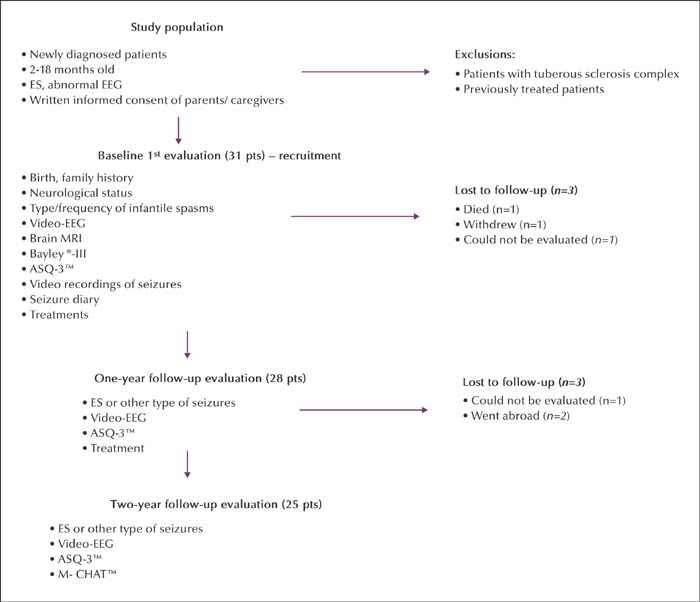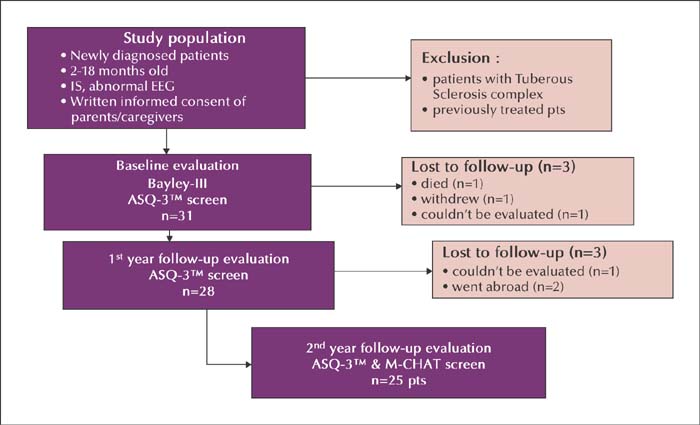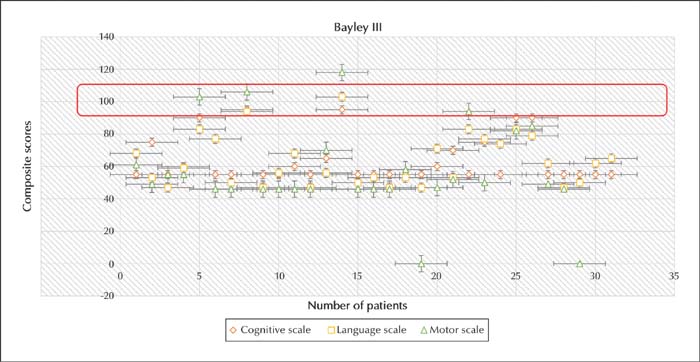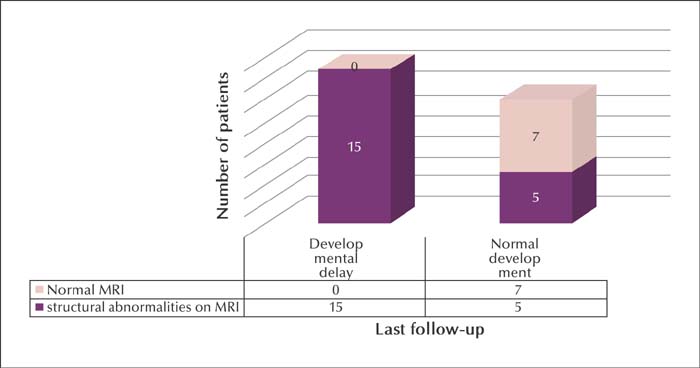Epileptic Disorders
MENUPredictors of outcome among 31 children with infantile spasms syndrome Volume 24, numéro 2, April 2022
- Mots-clés : West syndrome, infantile spasms, neurodevelopment, autism spectrum disorder, prospective study
- DOI : 10.1684/epd.2021.1397
- Page(s) : 359-72
- Année de parution : 2022
Objective. Infantile spasms syndrome is a severe epileptic encephalopathy. Management of infantile spasms remains challenging because of pharmacoresistant forms and relapsing seizures. A high number of patients with this syndrome have neurodevelopmental delay. The main objective of our study was to determine predictors to measure the neurodevelopmental outcome of patients with infantile spasms.
Methods. We prospectively evaluated 31 patients with infantile spasms from 2014 to 2017 at three hospitals in Tbilisi, Georgia. Various demographic data were evaluated at the first visit; video-EEG, brain MRI and neurodevelopmental evaluation were performed upon admission. A diary to record spasms was provided and completed by all parents/caregivers. Seizures were recorded on video and the phenomenology of infantile spasms was studied. Children were followed for one and two years after the first assessment.
Results. Neurodevelopmental deterioration was revealed in 61.1% on the second and 53% on the third evaluation in patients with onset of spasms before seven months of age. The mean score on the ASQ communication domain was low among structural cases. Eleven patients with pre-existing delay had developmental regression based on the second evaluation (Fisher's exact test: 7.2; df 1; p=0.01).
Significance. Our study reveals that age at onset of infantile spasms at less than seven months, pre-existing developmental delay, low ASQ scores and structural abnormalities on MRI are predictors of poor developmental outcome. Our data suggest that clinicians should inform parents at the first clinical evaluation about prognosis, and intervention should be started as early as possible in order to improve development.






